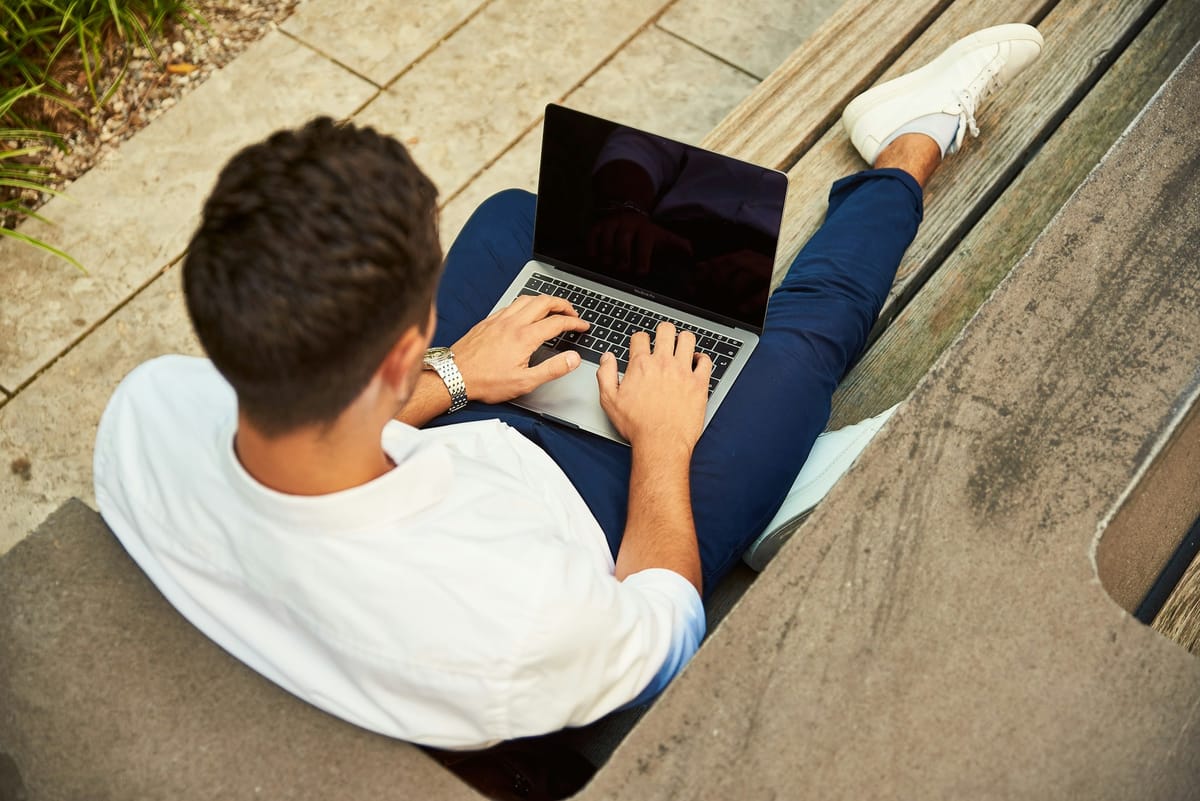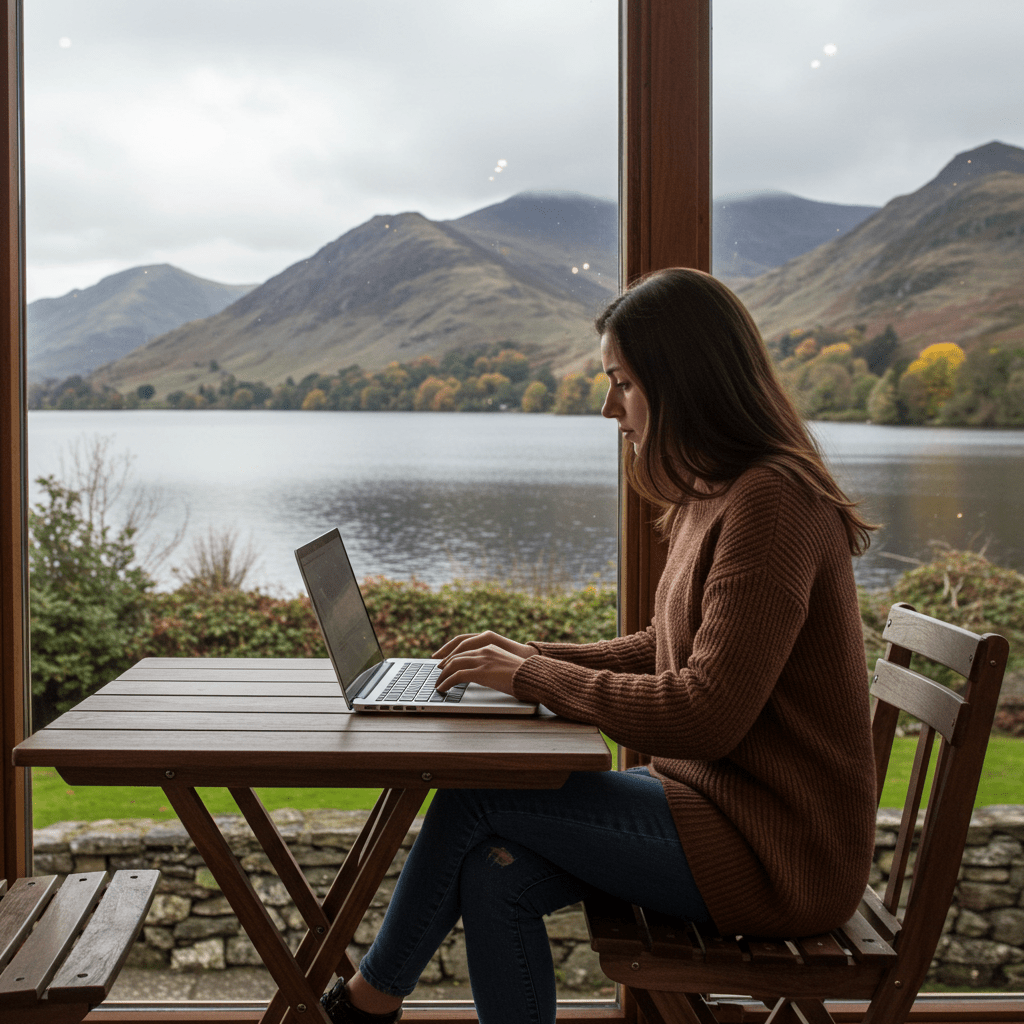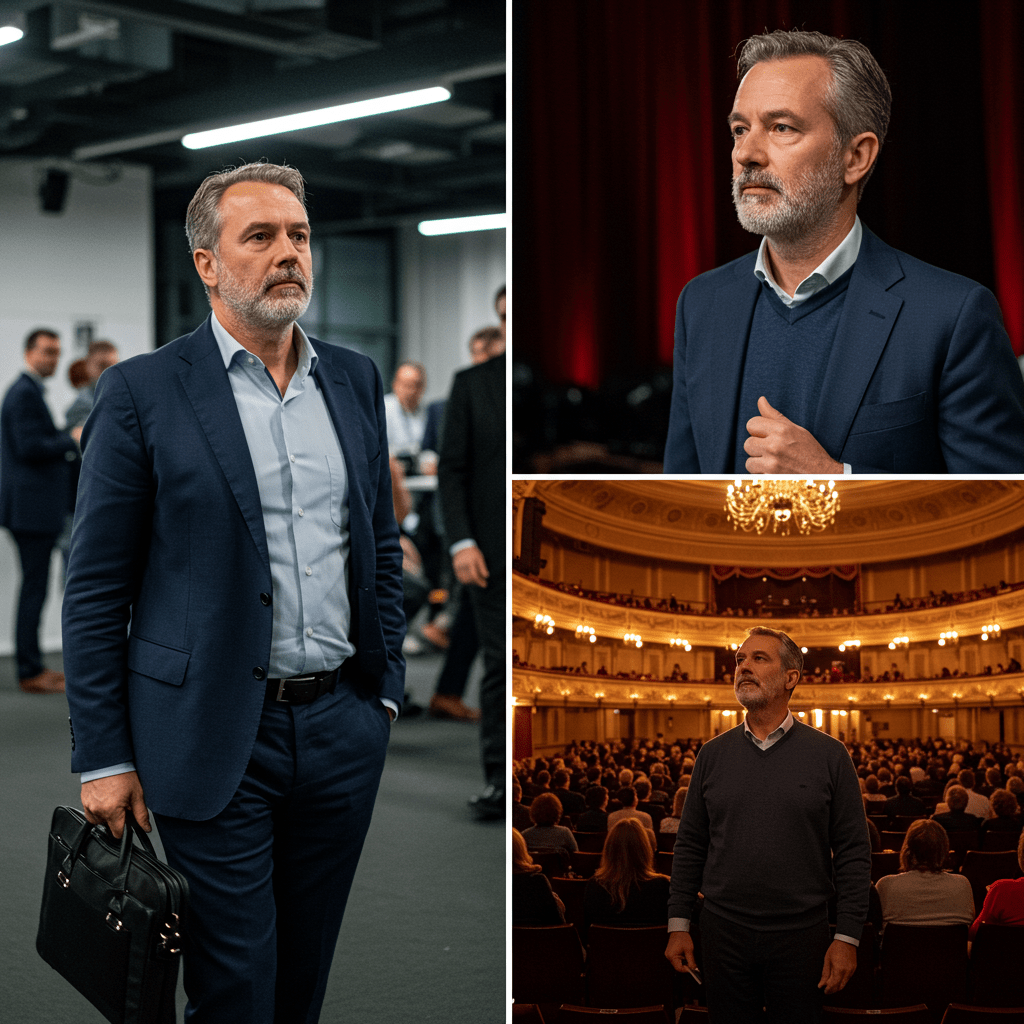Bleisure Travel: The Ultimate Guide to Mixing Business with Pleasure in 2025 and Beyond
Bleisure travel is taking off! Learn how to seamlessly blend business and leisure on your next trip. Our ultimate guide covers everything from planning tips and top destinations to company policies and future trends

What is Bleisure Travel?
Bleisure travel, a portmanteau of "business" and "leisure," is the increasingly popular practice of combining business travel with leisure activities. It's about maximizing your time on a work trip by adding personal travel days either before, during, or after your business obligations. There are two main types of bleisure travel:
- Extending a business trip: This is the most common form, where travelers add a few extra days or a weekend to their trip to explore the destination.
- Incorporating leisure activities during a business trip: This involves fitting in sightseeing, cultural experiences, or recreational activities during free time between meetings or work commitments.

Why is Bleisure Travel Booming in 2025?
Several factors are fueling the bleisure travel boom, which have only intensified in 2025:
- The Entrenched Remote Work Culture: The rise of remote work, solidified in the early 2020s, continues to empower employees to integrate work and travel seamlessly. The "laptop lifestyle" is now mainstream, and companies widely accept and even encourage blending work with personal pursuits.
- Desire for Enhanced Work-Life Balance: Bleisure allows individuals to maximize their time off and experience new destinations without using up all their vacation days. In 2025, the pursuit of a better equilibrium between professional and personal life is a top priority for many.
- Cost-Effectiveness: By extending a business trip, travelers can save on airfare, as the company typically covers the cost of the flight to and from the business destination. This makes leisure travel more accessible, even as travel costs fluctuate.
- Proven Productivity and Job Satisfaction: Studies have consistently shown that bleisure travel can reduce stress, boost creativity, and improve overall job satisfaction. Employees return to work feeling refreshed and motivated, benefiting both the individual and the employer.
- Experiential Travel Desires: Modern travelers, across all generations, value experiences over material possessions. Bleisure travel provides opportunities for unique and memorable experiences, enriching their lives beyond the workplace. 2025 sees a particular emphasis on authentic and immersive experiences.
Bleisure Travel Statistics: A Market on the Rise
The bleisure travel market is experiencing explosive growth, reflecting a significant shift in how people view business travel:
- Market Size: The global bleisure travel market is projected to reach over $2 trillion by 2033 (Statista, 2024). This indicates a massive and growing interest in combining work and leisure, with 2025 being a key growth year.
- Growth Rate: The market is experiencing a compound annual growth rate (CAGR) of approximately 20% (Future Market Insights, 2024). This rapid growth demonstrates that bleisure is not just a fad but a major, established trend.
- Demographics: Millennials and Gen X remain the primary drivers, but Gen Z is rapidly increasing their bleisure travel, representing a significant portion of the market in 2025 (Expedia Group Media Solutions, 2024). These generations prioritize work-life balance and experiential travel.
- Trip Length: While the average bleisure trip extension remains 2-3 days, "workcations" are increasingly popular, with a noticeable rise in trips extending leisure for a week or more in 2025 (Global Business Travel Association, 2025).
- Company Policies: Over 70% of companies now have formal or informal policies related to bleisure travel (Association of Corporate Travel Executives (ACTE) & American Express Global Business Travel (GBT), 2024), showing that businesses are recognizing and adapting to this trend.
- Traveler Intent: A significant 90% of business travelers plan to add personal vacation time to their business trips in 2025 (Forbes, 2025), highlighting the strong and continuing desire for bleisure experiences.
The Benefits of Bleisure Travel
Bleisure travel offers a multitude of benefits for both employees and employers:

For Employees:
- Improved Work-Life Balance: Achieve a better balance between work and personal life by seamlessly integrating leisure activities into business trips. This helps reduce stress and improve overall well-being.
- Reduced Stress and Burnout: Time for relaxation and exploration can significantly reduce stress levels and prevent burnout, leading to a more sustainable and enjoyable work life.
- Increased Job Satisfaction: Bleisure travel can make work trips more enjoyable, leading to greater overall job satisfaction and a more positive attitude towards work.
- Cost Savings: Save on travel costs by leveraging company-paid flights for personal travel, making vacations more affordable.
- Personal Enrichment: Experience new cultures, cuisines, and activities, leading to personal growth, a broader perspective, and lasting memories.

For Employers:
- Enhanced Employee Morale and Retention: Offering bleisure opportunities can boost employee morale, loyalty, and reduce turnover, as employees feel valued and appreciated.
- Increased Productivity: Refreshed and motivated employees are often more productive and engaged in their work after a fulfilling bleisure trip.
- Improved Employer Brand: Being seen as a company that supports work-life balance can attract top talent in a competitive job market, enhancing the company's reputation.
- Cost Savings on Recruitment: Happy employees are less likely to leave, reducing recruitment and training costs associated with high turnover.
What are Bleisure Travelers Looking For in 2025?
Understanding bleisure traveler preferences is crucial for the travel industry and employers alike. In 2025, bleisure travelers are seeking:
- Seamless Transitions: Easy and efficient ways to move between work and leisure. Hotels that offer both well-equipped business centers and relaxing leisure facilities are highly valued. Fast check-in/check-out and flexible workspaces are key.
- Unique Experiences: Opportunities to explore local culture, cuisine, and attractions. Travelers want authentic experiences that go beyond typical tourist activities. They are looking for local recommendations and insider tips, often sourced through social media and travel blogs.
- Wellness and Relaxation: Activities that promote physical and mental well-being, such as spa treatments, yoga classes, meditation sessions, and access to nature. Bleisure travelers are increasingly prioritizing self-care, with a strong interest in wellness retreats and fitness options.
- Family-Friendly Options: More travelers are bringing their families along. Destinations and hotels that cater to families with activities and amenities for all ages are in high demand. Kid-friendly services, family suites, and childcare options are a major plus.
- Technology Integration: Reliable high-speed Wi-Fi, mobile apps for booking and planning, digital concierge services, and smart room features are essential for a smooth bleisure experience. Travelers in 2025 expect seamless tech integration throughout their trip.
- Sustainable Travel Options: Eco-conscious travelers prefer sustainable accommodations, transportation, and activities that minimize their environmental footprint. They are looking for green certifications, eco-friendly practices, and opportunities to support local communities.
- Personalized Experiences: Tailored recommendations and customized itineraries based on individual preferences are highly valued. Travelers appreciate curated experiences that cater to their specific interests, with AI-powered travel planning tools becoming increasingly popular.
Top Destinations for Bleisure Travel in 2025
Certain cities are particularly well-suited for bleisure travel due to their combination of business infrastructure, leisure attractions, and overall appeal. Here are some top destinations for 2025:
- London, UK: A global business hub with iconic landmarks like the Tower of London, world-class museums, a vibrant theater scene in the West End, and diverse culinary offerings.
- Barcelona, Spain: Stunning architecture by Gaudí, beautiful beaches, a thriving culinary scene, and excellent conference facilities make it ideal for mixing business with pleasure.
- Singapore: A modern and efficient city-state with state-of-the-art business facilities, lush gardens like Gardens by the Bay, diverse cultural experiences, and exceptional food.
- New York City, USA: A global center for finance, media, and culture, offering endless entertainment options, iconic landmarks like the Statue of Liberty and Times Square, and unparalleled energy.
- Sydney, Australia: Stunning harbor views, outdoor activities like surfing at Bondi Beach, a vibrant arts scene with the iconic Opera House, and a relaxed atmosphere perfect for unwinding after work.
- Las Vegas, USA: While known for its entertainment, Las Vegas also hosts numerous conferences and offers opportunities for outdoor adventures beyond the Strip, such as hiking in Red Rock Canyon.
- Orlando, USA: Home to world-famous theme parks like Disney World and Universal Studios, Orlando also boasts a growing business sector and numerous convention centers, making it ideal for family bleisure trips.
- Lisbon, Portugal: A rising star for bleisure, Lisbon offers a rich history, charming neighborhoods, delicious seafood, and a growing tech scene, all at a more affordable price point than many other European capitals.
- Amsterdam, Netherlands: Known for its canals, museums (like the Rijksmuseum and Van Gogh Museum), and cycling culture, Amsterdam provides a relaxed yet stimulating environment for bleisure travelers, with a strong focus on sustainability.
- Cape Town, South Africa: Emerging as a popular bleisure destination, Cape Town offers stunning natural beauty (Table Mountain, Cape Peninsula), a vibrant cultural scene, world-class wineries, and a growing business sector, particularly in tech and innovation.
Company Policies on Bleisure Travel: 9 Essential Considerations
Having clear company policies on bleisure travel is essential for both legal compliance and employee well-being. Here's what to consider in 2025:
- Define clear boundaries between work and leisure time. Ensure employees understand when they are expected to be working and when they are on their own time. This is especially important as remote work becomes more integrated into bleisure trips.
- Establish guidelines for expense reporting. Clearly outline what expenses are eligible for reimbursement during the leisure portion of the trip (e.g., meals, accommodation, activities). Use automated expense management systems for easier tracking.
- Address risk management and duty of care. Companies have a responsibility to ensure employee safety. Outline procedures for emergencies during both the business and leisure portions of the trip. Provide 24/7 support contacts.
- Clarify insurance coverage. Specify whether the company's travel insurance covers the leisure portion of the trip. Advise employees on whether they need to obtain personal travel insurance.
- Set expectations for communication and availability. While employees should be able to disconnect, there may be situations where limited availability is required. Define these expectations clearly, especially for different time zones.
- Determine approval processes for bleisure travel requests. How far in advance should employees request approval? Who has the authority to approve or deny requests? Streamline the process using HR software.
- Consider the tax implications. Consult with tax professionals to understand any potential tax implications for both the company and the employee, especially regarding deductibility of expenses and cross-border taxation.
- Ensure compliance with relevant labor laws. Policies should comply with all applicable labor laws and regulations in the relevant jurisdictions, including working time directives and paid time off (PTO) policies.
- Communicate the policy clearly and transparently to all employees. Make the policy easily accessible (e.g., on the company intranet) and provide training or resources to ensure employees understand it. Regularly update the policy to reflect changes in laws and best practices.

Challenges and Solutions in Bleisure Travel
While bleisure offers numerous benefits, it also presents some challenges:
- Challenge: Blurring Boundaries: The biggest challenge is the potential for work to encroach on leisure time, or vice-versa, leading to stress and burnout. The "always-on" nature of modern work can make it difficult to disconnect.
- Solution: Establish clear boundaries between work and leisure. Communicate these boundaries to colleagues and stick to them. Utilize "Do Not Disturb" features on communication tools during leisure time. Schedule specific work hours and leisure hours, and consider using separate devices for work and personal use.
- Challenge: Employer Concerns about Liability and Productivity: Employers may worry about their liability if an employee is injured during the leisure portion of a trip or if productivity suffers.
- Solution: Develop comprehensive bleisure policies that address liability, insurance, and expectations for work performance. Conduct thorough risk assessments and provide clear guidelines to employees. Offer training on safe travel practices and responsible remote work habits.
- Challenge: Tax Implications: Bleisure travel can have tax implications for both employees and employers, especially regarding expense reporting and deductions.
- Solution: Consult with tax professionals to understand the applicable tax laws and regulations. Provide clear guidelines to employees on expense reporting for bleisure trips. Maintain detailed records of all expenses and consider using specialized software for tracking international tax obligations.
The Future of Bleisure Travel: Emerging Trends
Bleisure travel is more than just a temporary trend; it's a reflection of evolving work styles and travel preferences. Here are some emerging trends that will shape the future of bleisure in 2025 and beyond:
- The Rise of the "Workcation": Longer trips, sometimes spanning several weeks or even months, that blend remote work with leisure activities, allowing for a more immersive travel experience and a deeper connection with the destination. This trend is particularly strong among digital nomads and remote-first companies.
- Hyper-Personalization: AI-powered platforms will tailor bleisure itineraries based on individual preferences, past travel behavior, and even real-time data, suggesting activities, restaurants, and accommodations that perfectly match the traveler's needs and interests.
- Sustainability Focus: Bleisure travelers will increasingly prioritize eco-friendly travel options and destinations, seeking out sustainable accommodations, transportation (like electric vehicles or trains), and activities that minimize their environmental footprint and support local communities. There's a growing demand for "green" certifications and eco-tours.
- Integration of Technology: Seamless booking platforms, virtual concierge services, augmented reality (AR) experiences that enhance sightseeing, and wearable technology that tracks wellness metrics will further enhance the bleisure journey, making it easier to plan, navigate, and enjoy trips. Expect to see more VR and AR integration for destination previews and virtual tours.
- Focus on Wellness: Bleisure trips will incorporate more wellness activities, such as mindfulness retreats, fitness programs, spa treatments, and opportunities for digital detox, as travelers seek to improve both physical and mental well-being. "Well-being" will become a key component of trip planning, with dedicated wellness concierges becoming more common.
- Bleisure for All: The trend will continue to expand beyond the solo business traveler and include more families, groups of friends, and even "bleisure" team-building retreats, as companies recognize the value of shared experiences and a change of scenery for fostering team cohesion. Multi-generational bleisure trips will see significant growth.
- Data-Driven Insights: Travel companies and businesses will leverage data analytics to better understand bleisure traveler preferences, personalize offerings, optimize pricing and packages, and create targeted marketing campaigns. Real-time data will be used to adjust itineraries dynamically based on traveler behavior and external factors.
How to Plan the Perfect Bleisure Trip: A Step-by-Step Guide
- Communicate with Your Employer: Be transparent about your plans to add leisure time to your business trip. Obtain any necessary approvals well in advance and ensure your plans align with company policies. Discuss how you'll manage your workload and stay connected, if needed.
- Plan Ahead: Book flights and accommodations in advance, especially if traveling during peak season. Research visa requirements, if any. Consider booking flexible options in case your work schedule changes. Look for package deals that combine business and leisure amenities.
- Pack Smart: Pack versatile clothing that can transition from business meetings to leisure activities. Don't forget essentials like comfortable shoes, any necessary medications, adapters, and a universal travel adapter if needed. Consider packing a separate small bag for day trips or outings. Pack for both work and play, and remember any specialized gear for activities you plan to do.
- Research the Destination: Identify attractions, restaurants, and activities that interest you. Look for special offers or discounts for bleisure travelers. Utilize travel blogs, websites, and apps for recommendations. Check out local events calendars for concerts, festivals, or other happenings during your stay. Use social media to find hidden gems and local favorites.
- Set Boundaries: Allocate specific time for work and leisure to avoid burnout. Create a schedule, if necessary, and stick to it as much as possible. Communicate your "work hours" to colleagues to manage expectations. Use different physical spaces for work and relaxation, if possible.
- Embrace the Local Culture: Take advantage of your free time to explore local markets, try new foods, attend cultural events, and immerse yourself in the destination. Consider taking a cooking class, a language lesson, or a guided walking tour to learn more about the local culture. Engage with locals to get authentic recommendations.
- Stay Connected: Ensure you have reliable Wi-Fi or a local SIM card to stay connected for work, if needed. Research co-working spaces if you need a dedicated workspace away from your hotel. Download useful travel apps for navigation, translation, and local information.
- Be Mindful of Costs: Track your expenses and stick to your budget. Take advantage of free activities, such as walking tours or visiting parks. Look for discounts or deals on attractions and dining. Consider using a travel rewards credit card to earn points or miles on your spending. Set a daily budget for leisure activities.
- Prioritize Safety: Research safety guidelines for your destination. Share your itinerary with someone at home and be aware of your surroundings. Have emergency contact information readily available. Consider travel insurance for added peace of mind. Be particularly mindful of cybersecurity when using public Wi-Fi.
Examples of Successful Bleisure Trips
- Tech Conference in San Francisco: A software engineer attends a tech conference in San Francisco. After the conference, they spend four extra days exploring the city, visiting Alcatraz, walking across the Golden Gate Bridge, taking a day trip to Napa Valley for wine tasting, exploring Muir Woods, and enjoying the vibrant culinary scene.
- Sales Meeting in London: A sales executive has a week-long meeting in London. They arrive three days early and takes a weekend trip to the Cotswolds, enjoying the picturesque countryside, visiting historical sites like Stonehenge and Bath, and indulging in traditional English pubs before diving into their work commitments.
- Family Bleisure in Orlando: A marketing manager attends a trade show in Orlando. They bring their family along, and they spend the days exploring the theme parks (Disney World, Universal Studios) while the manager attends the trade show. They all enjoy evenings together, making it a memorable family vacation and taking advantage of discounted park tickets offered to conference attendees. They also add a day trip to the Kennedy Space Center.
- Marketing Summit in Barcelona: A marketing professional attends a summit. They extend their stay by five days to explore Park Güell, Sagrada Família, enjoy tapas and local cuisine, relax on Barceloneta Beach, and take a day trip to the medieval city of Girona.
- Financial Conference in Singapore: A financial analyst attends a conference in Singapore. After the conference, they spend an extra week exploring the Gardens by the Bay, indulging in the diverse food scene (from hawker centers to Michelin-starred restaurants), visiting cultural enclaves like Little India and Chinatown, and taking a day trip to Sentosa Island for some beach time.

Conclusion
Bleisure travel offers a win-win situation for both employees and employers, fostering work-life balance, exploration, and increased job satisfaction. As we move further into 2025 and beyond, bleisure travel will become increasingly integral to the modern travel landscape, driven by evolving work styles, a desire for more fulfilling travel experiences, and advancements in technology. By embracing this trend, planning your trips wisely, and utilizing the tips provided in this guide, you can unlock a world of opportunities to blend business with pleasure seamlessly. The future of work and travel is here, and it's looking brighter and more balanced than ever before.



